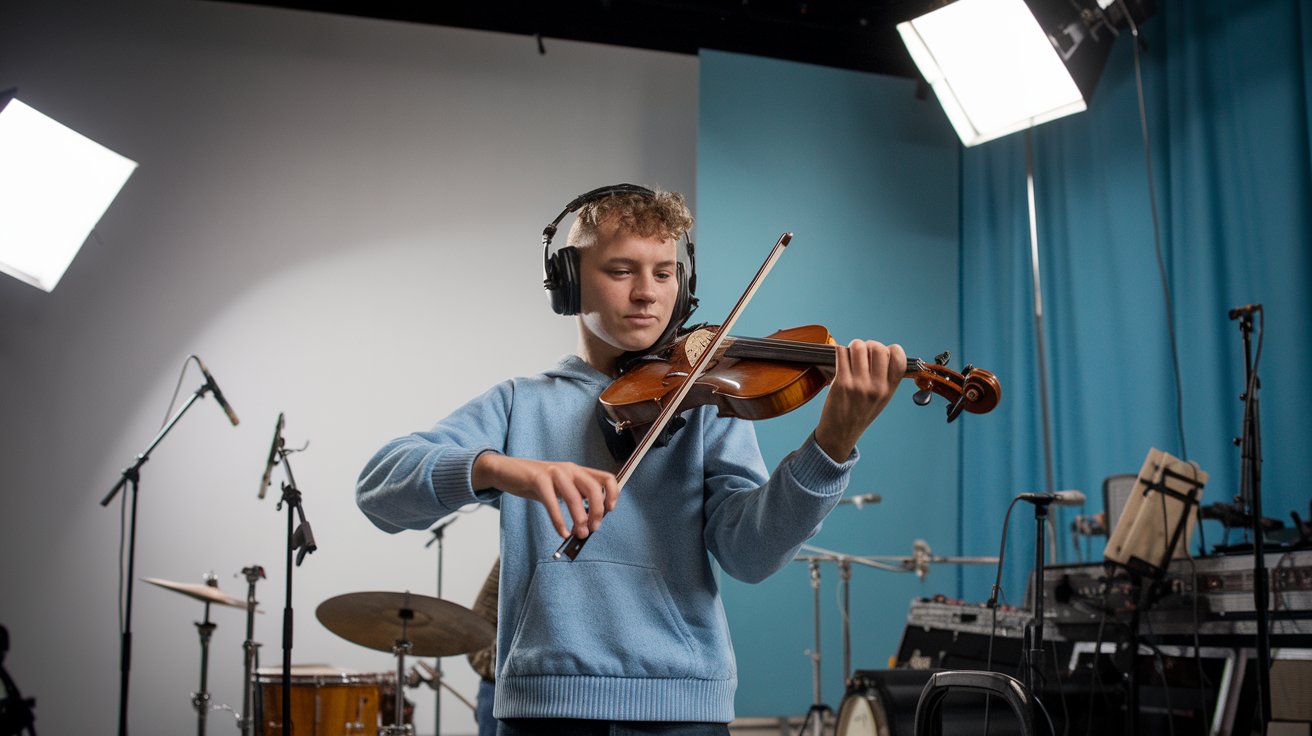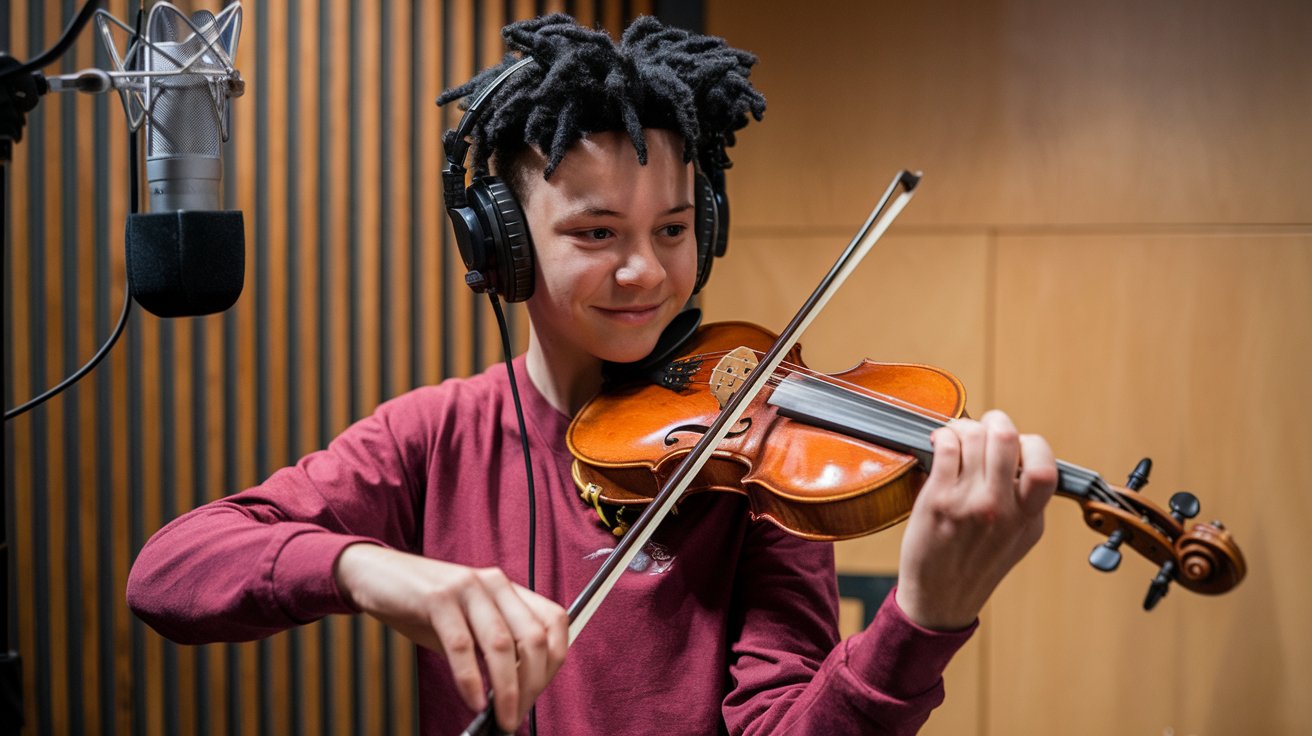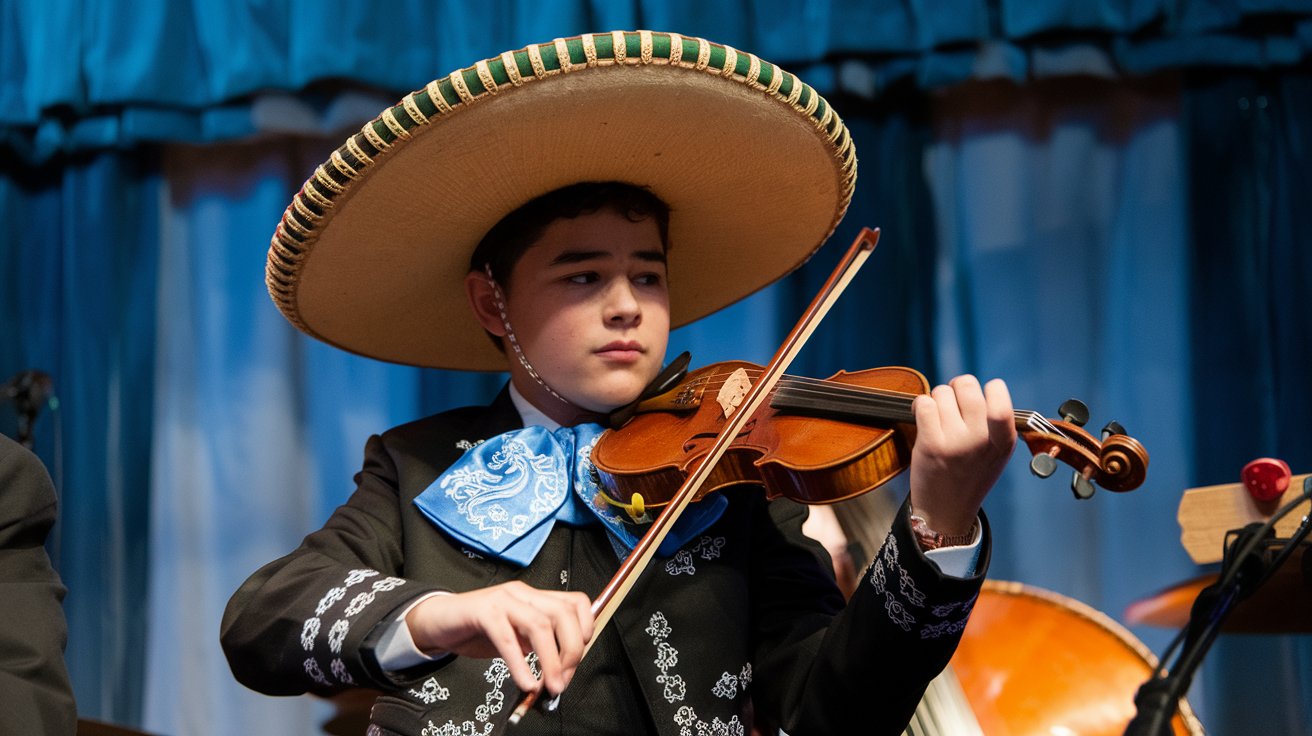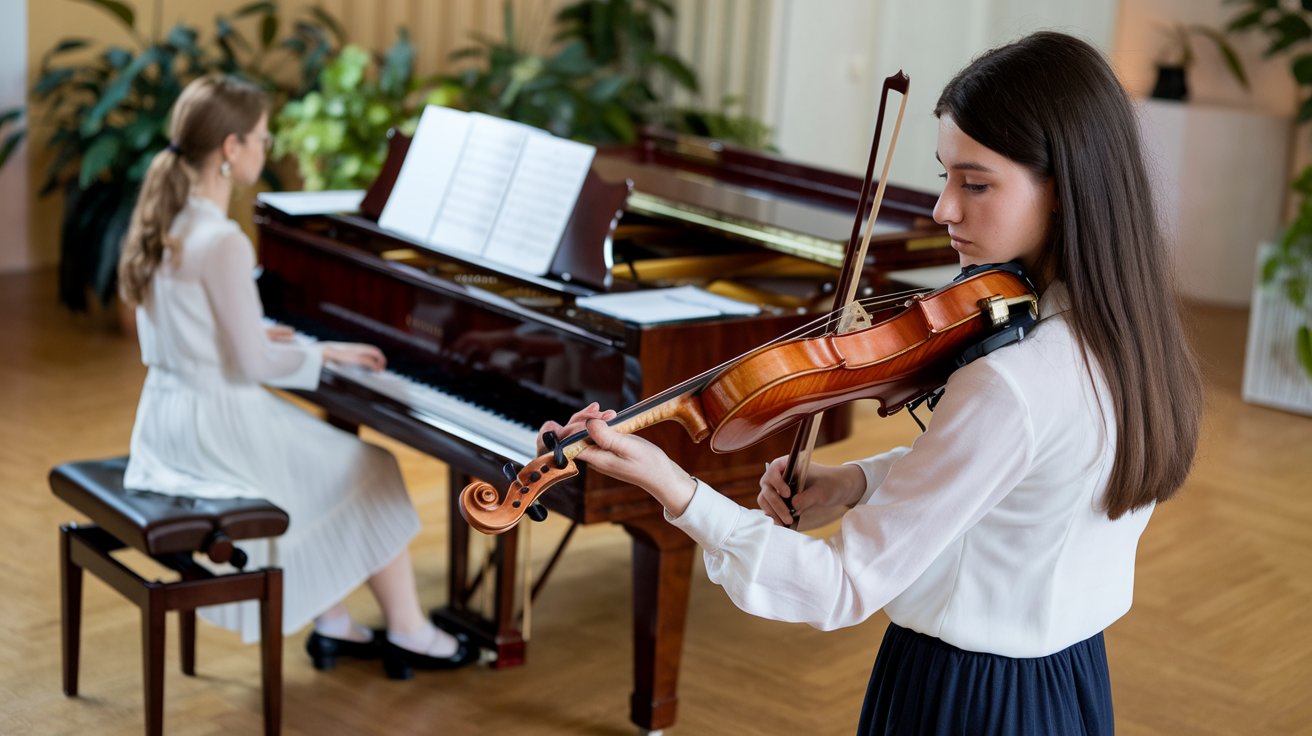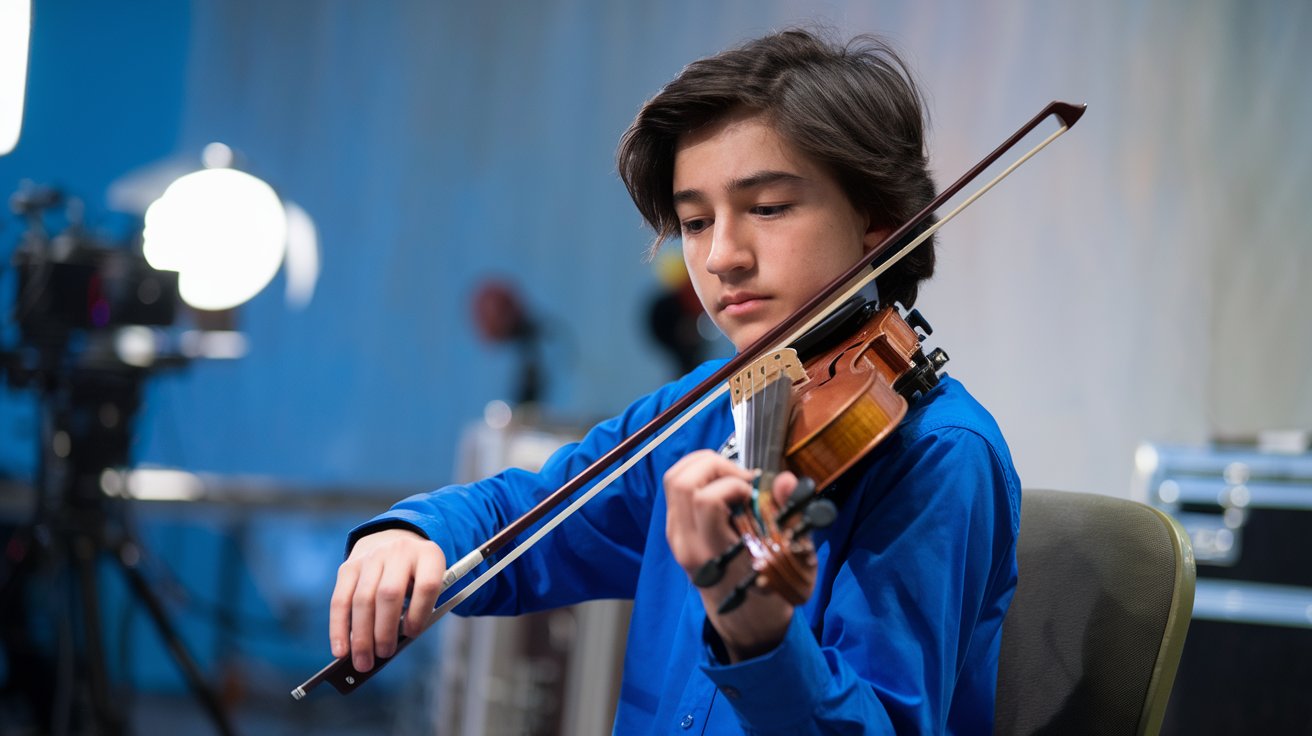Violin Lessons for Beginners The violin is a beautiful and expressive instrument that has captivated musicians and audiences for centuries. Its rich tone and versatility make it a popular choice for aspiring musicians, whether they are drawn to classical music, folk tunes, or even modern genres like jazz and pop. However, learning the violin can...
Violin Lessons for Beginners
Violin Lessons for Beginners
The violin is a beautiful and expressive instrument that has captivated musicians and audiences for centuries. Its rich tone and versatility make it a popular choice for aspiring musicians, whether they are drawn to classical music, folk tunes, or even modern genres like jazz and pop. However, learning the violin can be challenging, especially for beginners. The good news is that with dedication, practice, and the right guidance, anyone can learn to play this wonderful instrument.
In this post, we’ll explore what beginners can expect from their first violin lessons, the basics of violin playing, and tips for making the most of your practice sessions.
Why Learn the Violin?
Before diving into the details of violin lessons, it’s worth considering why you should learn the violin in the first place. The violin offers a range of benefits that go beyond just musical enjoyment:
- Versatility: The violin is used in many genres, from classical and folk to jazz and even pop music.
- Emotional Expression: The violin’s ability to convey a wide range of emotions makes it an incredibly expressive instrument.
- Cognitive Benefits: Learning the violin helps improve memory, focus, and problem-solving skills, thanks to the coordination and concentration required.
- Discipline and Patience: Mastering the violin takes time and practice, which teaches valuable life skills like perseverance and discipline.
Now, let’s explore what you can expect from your first violin lessons.
What to Expect from Your First Violin Lessons
If you’re a complete beginner, your first violin lessons will focus on building a solid foundation. This foundation is crucial for your progress as a violinist and will help you develop good habits from the start. Here are the key elements you’ll likely cover in your first lessons:
1. Getting to Know Your Violin
Your first lesson will likely begin with an introduction to the violin itself. You’ll learn about the different parts of the instrument, such as the strings, fingerboard, bridge, and bow. Your instructor will show you how to properly hold the violin and bow, ensuring that you develop good posture and positioning from the start.
2. Holding the Violin and Bow
One of the first challenges for beginners is learning how to hold the violin and bow correctly. Your instructor will guide you through the proper hand and arm positioning, which is essential for producing a good sound and preventing strain or injury.
- Violin Position: The violin is typically held on the left shoulder, with the chin resting on the chinrest. Your left hand will support the neck of the violin, and your fingers will press down on the strings to produce different notes.
- Bow Hold: Holding the bow correctly is just as important as holding the violin. Your instructor will show you how to grip the bow with your right hand, ensuring that your fingers are relaxed yet controlled.
3. Basic Bowing Techniques
Once you’re comfortable holding the violin and bow, your instructor will introduce basic bowing techniques. Bowing is how you produce sound on the violin, and learning to control the bow is key to playing smoothly and expressively.
- Open Strings: You’ll likely start by practicing bowing on open strings (playing the strings without pressing down on them with your fingers). This helps you focus on producing a clean sound and controlling the bow’s movement.
- Bow Pressure and Speed: Your instructor will guide you on how to apply the right amount of pressure and control the speed of the bow to create different dynamics and tones.
4. Learning to Tune the Violin
Tuning your violin is an important skill that you’ll need to develop early on. The violin has four strings (G, D, A, and E), and they need to be tuned to the correct pitch before you start playing. Your instructor will teach you how to use a tuner or pitch reference to adjust the tuning pegs and fine tuners, ensuring that your violin sounds in tune.
5. Basic Finger Placement
Once you’re comfortable with bowing, you’ll begin to learn basic finger placement on the fingerboard. This is where you’ll start to produce different notes by pressing down on the strings with your left-hand fingers. Your instructor will guide you in finding the correct positions for your fingers, helping you develop muscle memory for different notes.
- First Position: Beginners typically start by learning the “first position” on the violin, which is where your fingers are placed closest to the scroll of the instrument.
- Finger Markings: Some instructors may use finger markings (such as small stickers) to help beginners learn where to place their fingers on the fingerboard.
6. Basic Music Reading
As you progress, you’ll start to learn how to read sheet music. Reading music is an essential skill for any violinist, and your instructor will introduce you to the basics of music notation, including the staff, notes, and rhythms. You’ll practice reading simple melodies and applying them to your playing.
Tips for Making the Most of Your Violin Practice
Learning the violin takes time and patience, but with consistent practice and the right approach, you’ll start to see progress. Here are some tips for making the most of your practice sessions:
1. Practice Regularly
Consistency is key when learning the violin. Aim to practice a little every day, even if it’s just for 15-30 minutes. Regular practice helps reinforce what you’ve learned and builds muscle memory.
2. Start Slowly
Don’t rush through your practice sessions. Start slowly and focus on accuracy and control. As you become more comfortable with the techniques, you can gradually increase your speed.
3. Focus on Technique
Good technique is essential for producing a beautiful sound on the violin. Pay attention to your posture, hand positioning, and bowing technique, and make sure you’re practicing with good form.
4. Break Down Difficult Passages
If you’re struggling with a particular section of music, break it down into smaller parts and practice each part slowly. Once you’ve mastered the individual parts, you can put them together.
5. Listen to Music
Listening to professional violinists can inspire you and help you develop a sense of tone and phrasing. Pay attention to how different violinists express themselves through their playing, and try to apply some of those techniques to your own practice.
Enjoy the Journey
Learning the violin is a rewarding journey that requires dedication, patience, and a love for music. While it may seem challenging at first, every step you take brings you closer to becoming a skilled violinist. Remember to enjoy the process, celebrate your progress, and embrace the joy of making music.
At Musicogroove, we offer personalized violin lessons for beginners of all ages. Our experienced instructors are here to guide you every step of the way, helping you build a strong foundation and develop your skills with confidence. Ready to start your violin journey? Contact us today to schedule your first lesson and discover the beauty of the violin!

